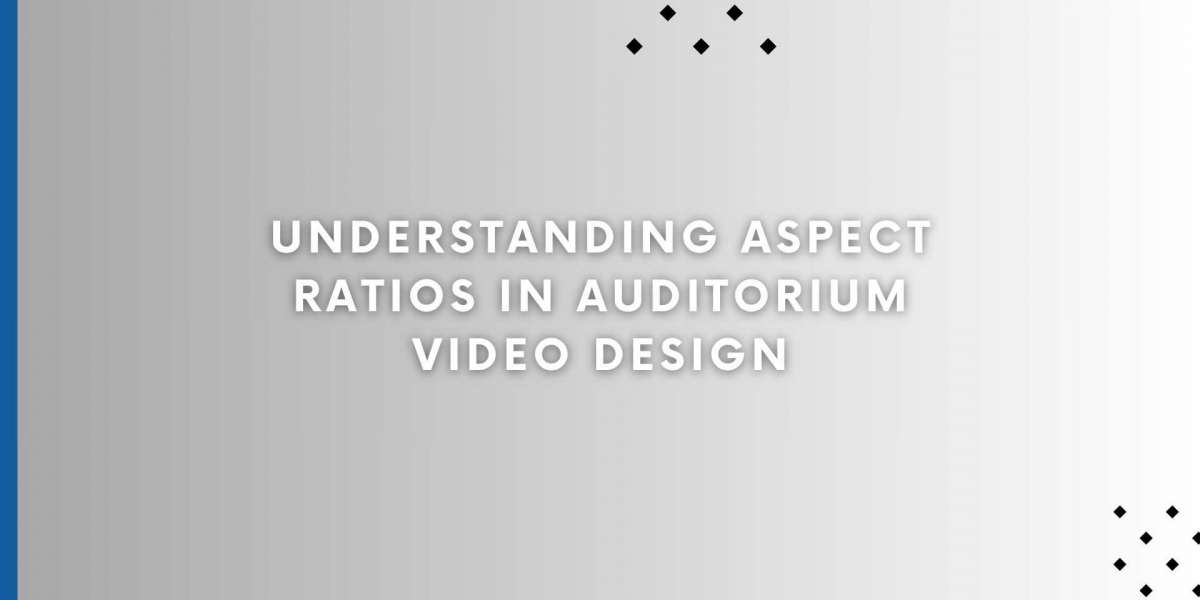When designing a high-impact AV experience in an auditorium, few elements are as critical as video display. From large projection screens and LED walls to digital signage and confidence monitors, visual content plays a key role in presentations, lectures, performances, and hybrid events. One factor that determines how content is displayed effectively across these mediums is the aspect ratio—a technical detail that can make or break audience engagement.
That is where XTEN-AV becomes essential. As a leading AV design platform, XTEN-AV helps AV professionals make precise decisions in auditorium AV design, including choosing the right aspect ratios for screens, content, and layouts. Whether you are working on a corporate auditorium, educational space, or government facility, XTEN-AV gives you the tools to visualize how different display configurations will function in the real world.
In this blog, we break down what aspect ratios are, why they matter, how to choose the right one for your auditorium project, and how to implement them using modern AV tools.
What Is an Aspect Ratio?
An aspect ratio is the proportional relationship between the width and height of a video display or screen. It is typically written as two numbers separated by a colon—for example, 4:3, 16:9, or 21:9.
Common aspect ratios include
4:3 – Traditional format used in older monitors and projectors
16:9 – Widescreen standard for HD video and most modern displays
16:10 – Popular in professional and education environments
21:9 – Ultra-wide for immersive environments and cinematic presentations
Choosing the right aspect ratio ensures that your content fits properly on the screen without being distorted, cropped, or leaving empty space.
Why Aspect Ratios Matter in Auditoriums
Aspect ratio is not just a visual preference. It directly impacts how well your message is delivered to the audience. In auditoriums, the screen must accommodate everything from PowerPoint slides and video content to live camera feeds and remote presentations.
Here is why it matters
Content compatibility – Mismatched aspect ratios cause black bars, stretching, or cropping
Audience visibility – Improper scaling can make content hard to read from a distance
Aesthetic balance – A well-proportioned screen aligns with the room’s architecture
Cost efficiency – Choosing standard formats reduces equipment and content production costs
Flexibility – A versatile screen format supports both legacy and modern content
With XTEN-AV, you can compare multiple screen options within your auditorium AV design and see how each aspect ratio affects visibility and seating sightlines.
How to Choose the Right Aspect Ratio
There is no one-size-fits-all solution when it comes to aspect ratio in auditorium design. It depends on several factors including content type, screen size, projector resolution, and audience seating.
Consider the following questions
What type of content will be displayed most often?
For video-centric events, 16:9 or 21:9 may be better
For lecture-heavy or data presentations, 16:10 offers more vertical space
What equipment are you using?
Most modern projectors and displays are optimized for 16:9
Older or specialty devices may default to 4:3 or 16:10
What is the size and shape of the room?
A wide room may benefit from 21:9 for enhanced immersion
Tall, narrow rooms might need 4:3 or 16:10 for optimal viewing
Will the room host hybrid events or live streaming?
Remote participants often view content in 16:9 format
Aligning your on-site aspect ratio with common streaming resolutions ensures consistency
XTEN-AV’s screen design tools let you simulate screen placement and aspect ratios in real-time so you can make informed decisions before installation.
Common Aspect Ratios in Auditorium AV Design
Let’s explore the most common aspect ratios used in auditorium AV design and their typical applications:
1. 4:3 – Legacy Format
Best for: Historic venues or compatibility with older equipment
Pros: Good for text-heavy slides; compact vertical design
Cons: Not compatible with modern HD content; limited future-proofing
2. 16:9 – Modern Standard
Best for: Corporate presentations, video content, live streams
Pros: Native support for most laptops, streaming platforms, and projectors
Cons: Slight loss of vertical space compared to 16:10
3. 16:10 – Productivity Format
Best for: Education, enterprise data presentations
Pros: Provides more height for spreadsheets, code, and graphs
Cons: Less common in consumer video content; may require scaling
4. 21:9 – Ultra-Wide Experience
Best for: Cinematic content, immersive collaboration, hybrid event stage backdrops
Pros: Excellent for panoramic displays and audience engagement
Cons: May require specialty projectors or LED walls; higher cost
XTEN-AV’s content compatibility checker ensures your media files match the screen format, preventing costly design mismatches.
Multi-Aspect Ratio Solutions
In many cases, a single fixed aspect ratio does not meet all use cases. Modern auditoriums are adopting multi-aspect ratio designs, which include:
Movable masking systems that resize the screen based on content
Multiple screen zones for side-by-side video and slides
Blended projection that adapts to different source formats
With XTEN-AV, you can design these advanced setups using modular tools, define signal paths for each input source, and automatically generate wiring diagrams and BOMs for each screen configuration.
Real-World Example: Choosing Between 16:9 and 21:9
Imagine designing an auditorium for a tech company that hosts global town halls and product launches. They need a screen that supports:
Live streaming to remote employees
Presentation slides
Pre-recorded cinematic videos
Real-time dashboards
In this case, 21:9 may offer the best immersive experience for on-site attendees, while maintaining compatibility with 16:9 streaming by using letterboxing or custom layouts. With XTEN-AV, you can mock up both designs, calculate viewing distances, and ensure content scales correctly across the entire room.
Final Thoughts
Aspect ratios are a foundational element of successful auditorium AV design. Choosing the right one enhances clarity, improves engagement, and supports modern content workflows. Whether you are designing for education, enterprise, or entertainment, understanding the purpose of your space—and the visual expectations of your audience—will guide you to the right choice.
XTEN-AV simplifies this process with powerful tools for screen layout, content simulation, and AV documentation. From planning to execution, it empowers AV professionals to deliver flawless video experiences in auditoriums of every size.
If you want your next AV project to look as good as it sounds, start by getting the aspect ratio right—and let XTEN-AV handle the rest.
Read more: https://talkline.co.in/read-blog/108940







